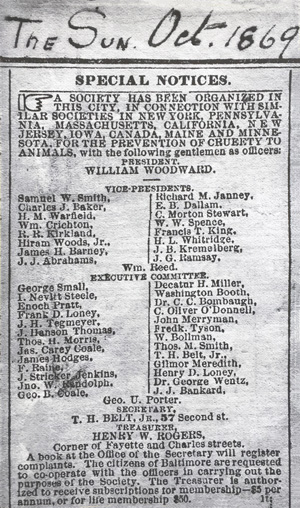 1869
1869
Concerned about the plight of work horses on city streets, 50 prominent Baltimoreans, including our first Board president, William Woodward, Esq., founded The Maryland Society for the Prevention of Cruelty to Animals of Baltimore City.
Its mission is to enforce laws for the protection of animals and to promote education about proper care of animals.
We are one of the oldest animal welfare organizations in the country.
1872
The Maryland SPCA is incorporated.
1886
SPCA agents patrol the streets looking for violators of animal cruelty laws and work with police to make arrests. Horses benefit the most, with agents helping to prevent beatings, pain from poorly fitting harnesses, harm from overloaded wagons, and a lack of feed and water.
1896-99
The problem of unwanted dogs comes under increased scrutiny. The Maryland SPCA oversees the transfer of the Baltimore City dog pound to an extensively renovated shelter at the Calverton Road Stockyards. In 1898, the Maryland SPCA agrees to manage the Calverton Road shelter and collect stray and lost dogs. The Maryland SPCA receives $2,000 a year from the city, with additional contract-related costs being covered by dog license fees.
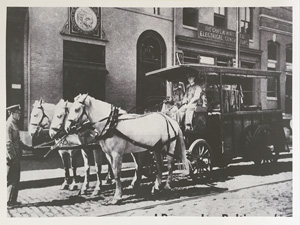 Early 1900s
Early 1900s
Operation of a horse-driven ambulance wagon for horses begins.
Mary Shearer, our 8th president, writes, “There were two seasons when trouble came particularly heavily… during the extremely hot latter part of the summer, when teams driven by inconsiderate owners would literally work themselves to death… and during the early part of the year when icy streets offered very little traction for work horses.” Our ambulance horses wear chain-like attachments on their feet for traction. The Society loans several hundred sets to teamsters who couldn’t afford them.
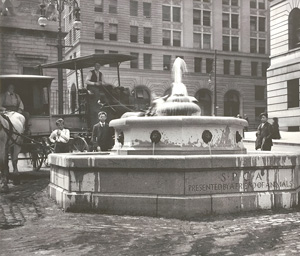 1900
1900
The Society begins placing drinking fountains for thirsty horses in prominent city thoroughfares. A dedicated Society member donates a fountain that is placed at Monument Square on Calvert Street, next to the monument commemorating the Battle of Baltimore in the War of 1812.
1903
612 North Calvert Street is leased as our first Society headquarters and is purchased in 1907. The front part of the building holds offices and a boardroom, while the rear houses a huge stable. The ground floor has stalls for several horses, space for the ambulance and a harness room. The upper stories house a crew member who is on duty around the clock. This location is our business address until 1926, and is an animal receiving station until 1967. This site is now part of the Waterloo Place apartments.
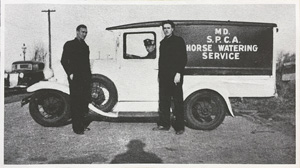 1924
1924
Beginning in 1924, a horse-watering truck, funded by Nellie C. Williams, appears on city streets. The truck visits areas where watering fountains are not available, such as wharfs and railroad terminals. During a 29-day period in 1940, the water truck covers 503 miles, delivering 11,000 gallons of water to 1,457 horses and mules.
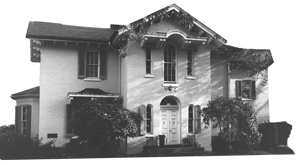 1926
1926
We purchase “Evergreen on the Falls” at 3300 Falls Road, in the Hampden neighborhood of Baltimore City—our current location—for use as headquarters. In 1975, Evergreen on the Falls is listed on the National Register of Historic Places.
1930
Hampden residents oppose having a dog shelter in the neighborhood. The city council and mayor enact a bill in 1928 to take Evergreen on the Falls from the Maryland SPCA. We prevail and install six dog kennels in 1930.
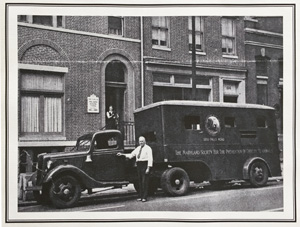 Late 1930’s
Late 1930’s
Our motorized ambulance for large animals replaces our horse-driven ambulance and rescues injured animals from the streets. It is pictured in front of our offices at 612 North Calvert Street.
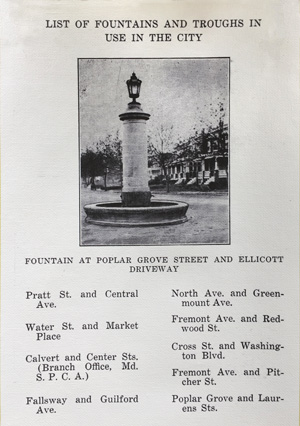 1941
1941
In 1941, there are nine horse-watering fountains in the city furnished by the SPCA, including one at the intersection of Calvert and Centre Streets, our office location.
1948
In 1948, we open our quarters for cats—complete with cat exercise runs and a special post for claw sharpening—and celebrate with a Society circus, featuring performing dogs, cats, monkeys and goats. Private boarding space is available for 47 dogs and 12 cats.
1950
The city requires that we provide lost and stray dogs to local hospitals for medical research, an act referred to as “pound seizure.” This incites internal and public controversy, and we conclude that pound seizure violates our charter to prevent cruelty to animals. So after more than 50 years, we choose to discontinue our contract with Baltimore City to manage shelter facilities and collect stray and lost animals. From 1950 to present, the Maryland SPCA has received no funds from the local or federal governments, relying instead on private donations to care for animals.
1963
We create and fill the position of superintendent and humane officer and phase out the system of street agents who report abuse to police. But we continue to investigate allegations of animal cruelty into the 1990s.
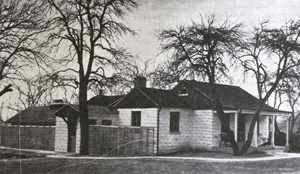 1967
1967
We transfer all operations from 612 North Calvert Street to 3300 Falls Road. The kennel at Evergreen is now a shelter for stray and unwanted pets because the Baltimore citizens prefer to bring animals to the Maryland SPCA rather than surrender them to the city.
1973-75
In 1973, Mayor William Donald Schaefer designates October 1-7 “SPCA Week” as part of the fundraising campaign for our new facility. Two years and $300,000 later, the facility opens.
In 1975, we begin spaying and neutering all of our unfixed cats on site. We are a model facility in trying to stem pet overpopulation, and as early as 1973, our president calls for an increase in educational efforts about the impact of animal overpopulation.
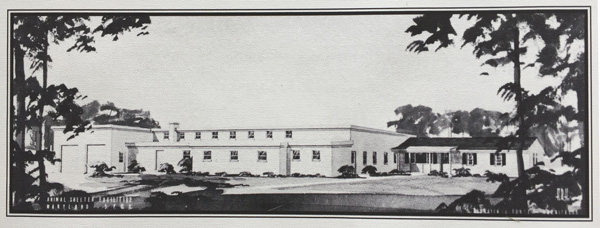
In 1975 the Maryland SPCA opens what the Baltimore Sun calls the “state’s most modern kennel facility.”
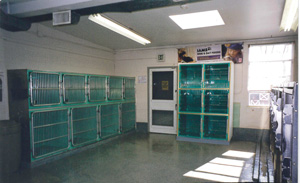 1980
1980
We open a nursery for puppies and kittens that separates them from adult animals, cutting down on the noise and commotion that disturbs the youngsters.
1982
We begin to spay and neuter all unfixed, adoptable animals on site. In 1988, we begin spaying and neutering kittens and puppies at eight weeks of age.
1988
We legally change our name from “The Maryland Society for the Prevention of Cruelty to Animals of Baltimore City, Inc.” to “Maryland SPCA of Baltimore City, Inc.”
In 2009, our name changed to “Maryland SPCA, Inc.”
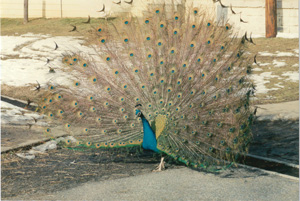 1995
1995
Our urban “barnyard” stops accepting animals other than dogs and cats because of cost and space constraints. The kinds of animals varied over the years, but our 1975 residents included ponies, goats, chickens and one white piglet. In later years, barnyard residents included burros, peacocks, pot-bellied pigs and geese.
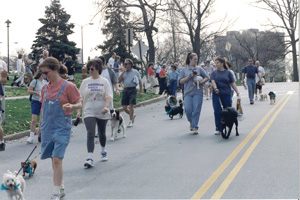 1996
1996
In 1996, we hold our first March for the Animals at the Johns Hopkins University campus and raise $30,000; in 1997 we raise $40,000. The March moves to Druid Hill Park in 2006 for a 1.5-mile walk around the reservoir. In 2008, despite heavy thunderstorms, several thousand people attend and raise $380,000.
We hire our first full-time volunteer coordinator.
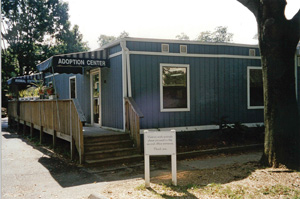 1998
1998
We renovate and expand our adoption center with funds from a bequest of over $1 million from Jeanette Snyder. We add new office space, create areas for people to get acquainted with animals, install sound-proof panels and separate cats from dogs by adding a room for cats.
2000
Over a four-year period beginning in 2000, we spay and neuter more than 10,000 animals in our mobile clinic, the Neuter Scooter. The scooter is funded in part by the Animal Welfare League, a few large donations, small fees for vaccinations and thousands of small donations from pet owners. The Neuter Scooter is retired in 2005.

2001
We join the Humane Society of the United States and other area shelters in successfully advocating for state legislation to make aggravated cruelty to animals a felony.
2002
We begin to recruit volunteers to temporarily care for puppies and kittens who are too young for the shelter. In 2002, our Foster Care program expands to adult animals with special behavioral or health needs. In 2008, more than 400 animals were placed in foster care with our volunteer caretakers.
2005
In 2005, we begin working with pet owners to solve problems that might cause them to surrender their pets to a shelter. The admission deferment approach reduces the number of animals surrendered to shelters and enables many pet owners to keep their pets at home.
We begin taking in large numbers of animals from neighboring shelters, including the Baltimore Animal Rescue and Care Shelter (BARCS), to provide better opportunities for adoption. In 2006, we are named an American Humane Association “Best Practices Honoree” for our Transport program. Transported animals make up almost 50% of all the animals in our adoption center in 2007.
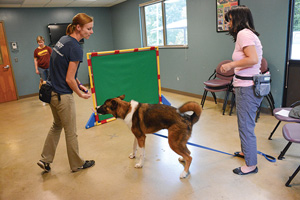 2006
2006
All-Star Canine, a six-week basic manners course designed to create a positive, lasting bond between owners and dogs, begins.
We join with other shelters to form the Baltimore Animal Welfare Alliance (BAWA), which works to improve the well-being of animals in our community. The alliance focuses on ending pet overpopulation; its ultimate goal is a community where no healthy/treatable animal is euthanized.
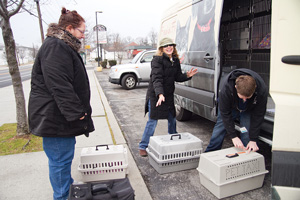 2007
2007
We begin publicizing a new mission. The Maryland SPCA improves the lives of pets and people in the community by fostering healthy animal-human relationships.
We no longer focus directly on the prevention of cruelty to animals. Instead, we seek to improve animal-human relationships and indirectly prevent cruelty by, accepting and adopting out pets, performing spay/neuter surgeries to reduce the unwanted pet population and offering behavior training and advice. Suspected cruelty cases are referred to the appropriate government agencies.
Trap Neuter Return (TNR) program launches.
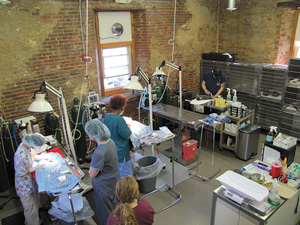 2008
2008
We open a freestanding, on-site, high-volume, low-cost, spay and neuter clinic in the renovated Pump House. With the new clinic, we expand our spay/neuter programs to target cats and pit bulls of low-income owners.
Voucher program starts, offering free spay surgeries to cat and dog owners with female pets who have given birth.
A Maryland SPCA volunteer forms Kibble Connection, which provides pet food to Meals on Wheels clients with pets.
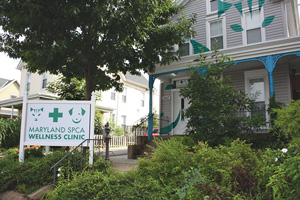 2009
2009
Maryland SPCA becomes state leader in spay/neuter procedures.
2010
Hampden Pet Health (now Maryland SPCA Wellness Clinic) opens.
2011
Morton Gorn Center for Animal Adoption opens, as an addition to the current shelter.
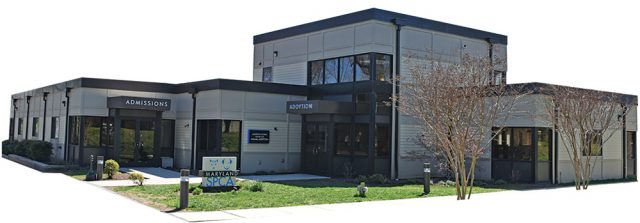
2012
Maryland SPCA begins saving pets with ringworm.
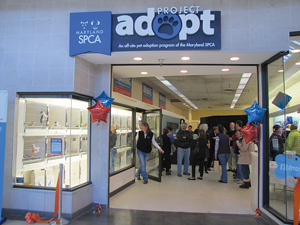 2013
2013
Project Adopt at White Marsh Mall opens.
New website launches with lost & found section.
City Kitty Fix program provides free spay/neuter surgeries in targeted neighborhoods.
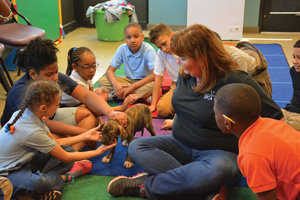 2015
2015
Humane Education program launches to teach animal safety, compassion and responsibility.
2016
MD SPCA Pet Pals Summer Reading program begins.
Cat Pawsitive training program starts.
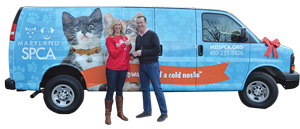 2017
2017
Cat portal construction is completed to provide more feline play and living space.
Third transport van begins service.
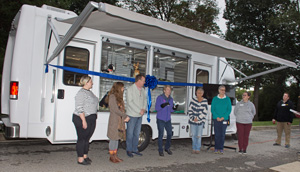 2018
2018
Project Adopt at White Marsh Mall closes in anticipation of the new Adoption vechicle.
Adoption vechicle is purchased and paid for in part by a Volunteer & Foster campaign.
Humane education expands to four schools.
